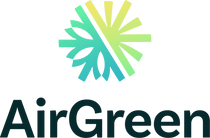Poorly Calibrated Ventilation: The Invisible Enemy of Your Comfort and Your Wallet
At AirGreen, we know that adjusting a heat recovery ventilator (HRV) is often overlooked, misunderstood, or flat-out ignored. And yet, a misconfigured HRV can not only compromise the air quality in your home but, more importantly, lead to a dramatic increase in your energy usage—and therefore your heating bill.
In this article, we’ll explain why a poorly set HRV is a critical mistake, what the consequences can be, and, most importantly, how we at AirGreen step in to optimize your ventilation system based on the specific needs of your home in Montréal, Laval, Longueuil, North Shore, or South Shore.
Why Is the HRV Setting So Crucial to Your Energy Consumption?
An HRV that’s not calibrated correctly can cancel out all your efforts to make your home energy efficient. In winter, an unbalanced airflow or overly aggressive ventilation can cause unnecessary heat loss. This forces your heating system—whether it’s a central heat pump, electric furnace, or gas system—to work overtime, which significantly increases your energy use.
Here are the most common mistakes we see in the field:
-
The HRV runs continuously at full speed, even when the house is unoccupied.
-
The incoming airflow exceeds the outgoing airflow, creating overpressure and forcing warm air to leak out.
-
Temperature or humidity sensors are either poorly placed or not calibrated at all.
-
The operation mode (automatic, intermittent, manual) is not adapted to the home’s actual usage.
Real Case: Poor HRV Settings in a Laval Home
We were recently called to investigate an unexpectedly high heating bill in a single-family home in Laval. The homeowner had just installed a brand-new Gree wall-mounted heat pump, hoping to reduce energy consumption. Yet despite the new unit, their Hydro-Québec bill had increased.
After a thorough inspection, we identified the issue: the HRV was effectively recovering heat… but ventilating far too aggressively, even overnight and when no one was home. The result? A constant loss of heat and a heating system that had to make up for it non-stop.
Our intervention included:
-
Rebalancing the airflows using our professional measuring equipment.
-
Reconfiguring the HRV to smart intermittent mode, triggered by a bathroom humidity sensor.
-
Inspecting and cleaning the HRV filters, which were clogged and inefficient.
-
Educating the homeowner on best practices for usage of the system.
The result: a 24% drop in energy consumption seen the very next month.
How Can You Tell If Your HRV Is Poorly Set?
Here are a few telltale signs we frequently encounter:
-
Your home always feels either too dry or too humid, despite having a decent heating system.
-
You feel cold drafts near the ventilation vents.
-
You hear the system running constantly, even when no one is home.
-
Your windows frost up or fog excessively in winter.
-
Your energy bills are increasing without any clear explanation.
If you recognize any of these symptoms, one visit from our HVAC experts could be all it takes to fix the issue.
The AirGreen Approach: Diagnosis, Optimization, Savings
At AirGreen, we don’t do guesswork. We apply a rigorous methodology, tailored to every type of residence—from condos and multiplexes to new builds and renovated homes.
1. Full Technical Evaluation
We inspect:
-
The current HRV settings.
-
The type of heating or cooling system it’s paired with.
-
The measured airflow per room.
-
The real-life usage of the home (occupants, habits, vacant periods).
2. Precise Settings and Airflow Balancing
Using calibrated tools, we:
-
Adjust the extraction airflow versus intake airflow for optimal balance.
-
Reduce heat loss while ensuring proper ventilation.
-
Check the heat recovery efficiency according to the model specs.
3. Smart Programming
We tailor the HRV’s operating mode:
-
To intermittent or demand-based modes, depending on high-use zones (bathroom, kitchen).
-
By pairing it with CO₂ or humidity sensors for dynamic, efficient ventilation.
4. Client Education
We take the time to explain:
-
When and how to use your HRV.
-
Which temperature and humidity levels to aim for.
-
When to clean or replace the filters.
Why Choose AirGreen to Optimize Your HRV in Greater Montréal?
Our technicians are experts in all types of ventilation systems, including HRVs, ERVs, and high-efficiency exchangers. We operate throughout Montréal, Laval, Longueuil, South Shore, and North Shore to ensure that your HVAC system is energy optimized and perfectly suited to Québec’s climate.
Mistakes to Avoid With Your HRV
-
Not having airflow balance checked after a renovation or HVAC upgrade.
-
Letting your HRV run 24/7 at full speed.
-
Skipping regular maintenance (clogged filters, blocked ducts).
-
Installing an HRV without ensuring it’s compatible with your insulation or existing systems.
Conclusion: A Well-Adjusted HRV = A Healthier Home and Real Savings
A heat recovery ventilator is a valuable tool for comfort, health, and energy savings—if it’s properly set up. At AirGreen, we bring our HVAC expertise to your home’s energy well-being. Don’t wait until your bill skyrockets to take action.
Contact us today for a professional inspection of your ventilation system in Montréal, Laval, Longueuil, South Shore, or North Shore. One simple visit can save you hundreds of dollars every winter.

